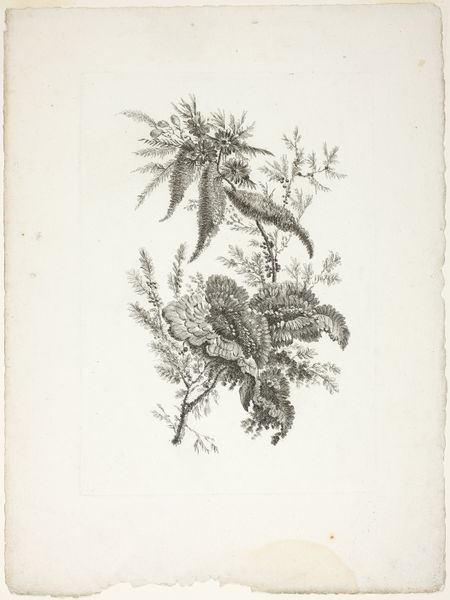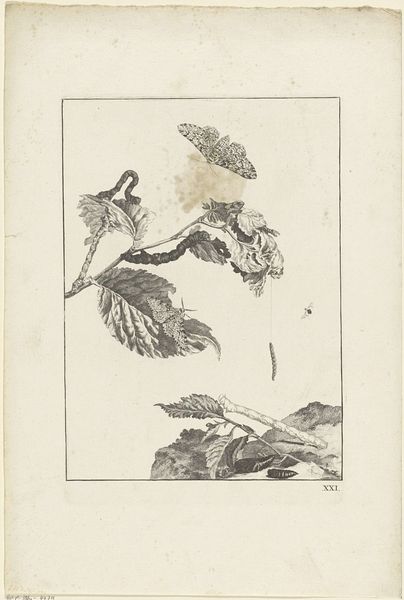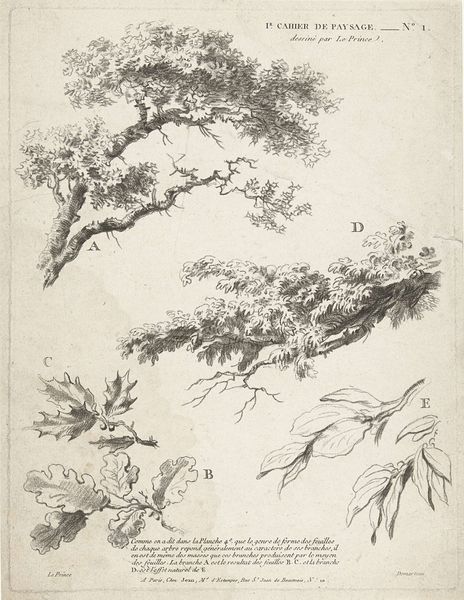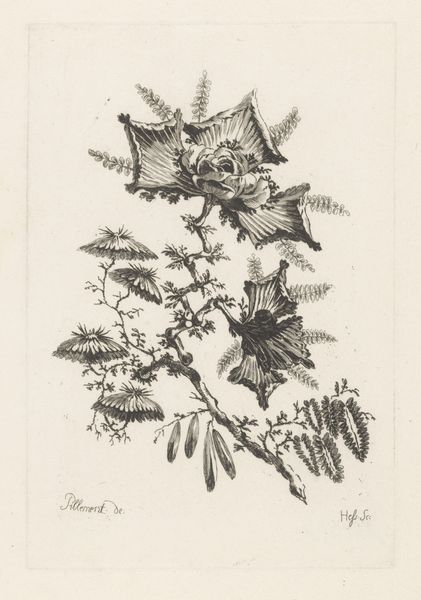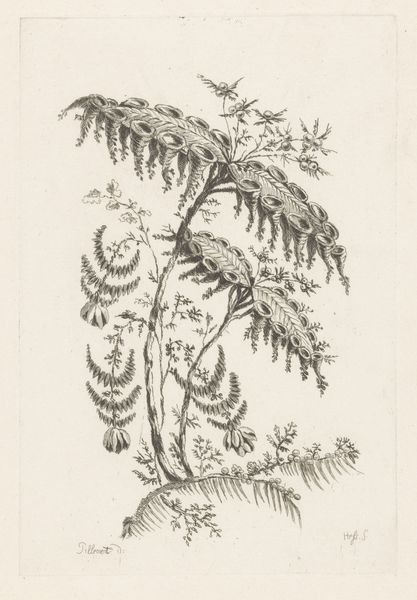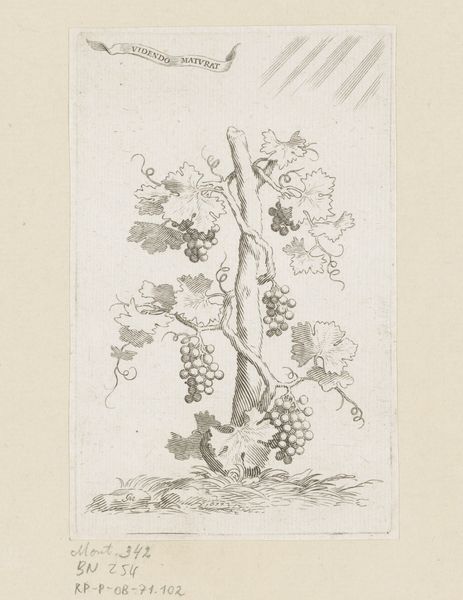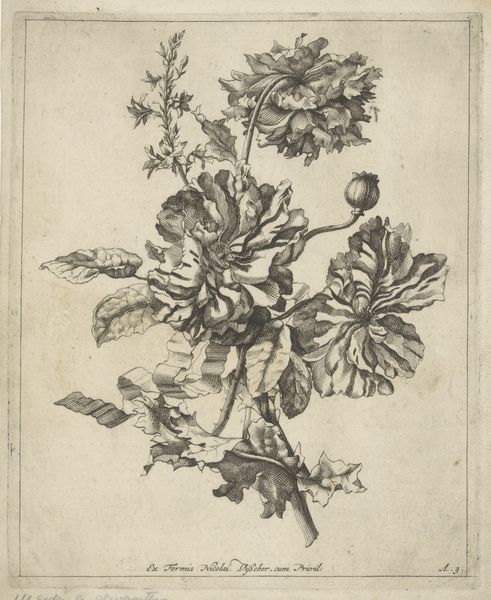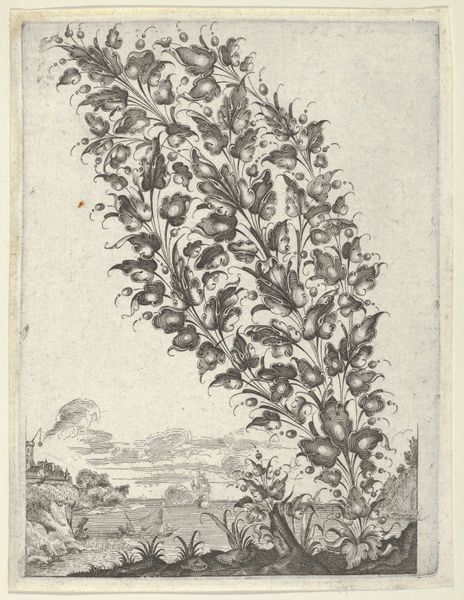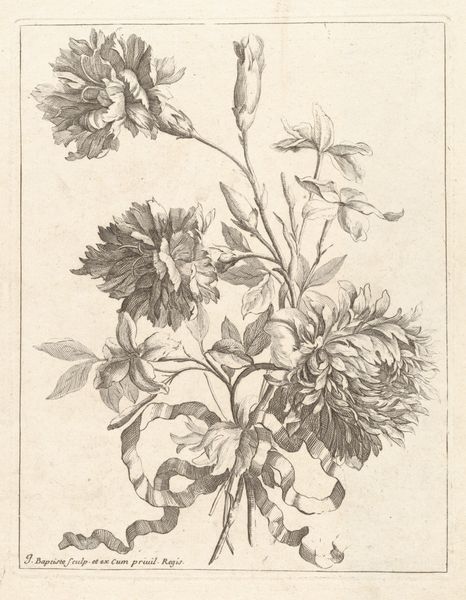
drawing, paper, pencil
#
drawing
#
pencil sketch
#
paper
#
pencil
#
rococo
Dimensions: height 271 mm, width 202 mm
Copyright: Rijks Museum: Open Domain
Curator: Look at this delightful pencil sketch, aptly named "Studie van drie takken met bladeren" or "Study of Three Branches with Leaves," created by Gilles Demarteau sometime between 1732 and 1776. It's rendered on paper. What’s your initial take? Editor: There’s an undeniable delicacy. The composition feels quite light, airy. I'm drawn to how the artist suggests form and texture with just the faintest of pencil strokes. Curator: Absolutely, and considering Demarteau's work within the Rococo period, you can see that pursuit of elegance and naturalism typical of the style. But look closer. To me, these aren't just branches, but almost emblems of resilience. Branches can represent growth, connection to the earth, and cycles of renewal, don’t you think? Editor: Interesting. I’m seeing it more through the lens of formal exercise. Notice how he explores the variation in line weight to define the leaves’ edges? It’s a meticulous study in chiaroscuro, with the hatching carefully calibrated to create volume. The way he models form with such economy is almost calligraphic. Curator: Indeed, the economy is striking. Demarteau was known for his engraving techniques, mimicking drawings. And considering that reproductive work, do you believe these drawings acted as source imagery for other prints and decoration? Branches could then symbolize not just growth, but also artistic propagation and continuity. Editor: Ah, an interesting angle! That bridges nicely with his known work as an engraver. Perhaps he saw these studies as both artistic exercises and sources for future designs—a dual purpose informed by Rococo’s decorative principles and the rise of print culture. Curator: Well, after contemplating these sketches together, it seems these simple branches hold a surprising wealth of meaning, reflecting both the artist's craft and our understanding of art history. Editor: I agree. This shows us how a detailed formal reading can really broaden our interpretation, beyond even the surface beauty, giving this subtle drawing more historical context.
Comments
No comments
Be the first to comment and join the conversation on the ultimate creative platform.
